Artificial intelligence developed for spray drone modified to monitor fields for weeds, disease or even insect infestations
Regina-based Precision AI is having a great year. Last summer, during the Ag In Motion outdoor farm show held near Saskatoon, the company launched its autonomous, fixed-wing drone that uses artificial intelligence to identify and treat individual weeds within a broad-acre-crop canopy. In March, it won numerous international awards for the drone, including the Cooperative […] Read more Crop Management
Crop Management
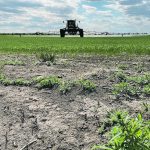
Herbicide hard on kochia, easy on the crop rotations
Dual-modal herbicide for wheat and barley allows for planting of peas or lentils in the following year
Growers in the dark brown and brown soil zone have a new herbicide option designed to control kochia in cereals. Corteva Agriscience’s OnDeck has a Group 6 (bromoxynil) and a Group 27 (tolpyralate), an active ingredient that is new to the western Canadian cereal market. Jason Smith, Corteva’s western portfolio marketing manager for cereal herbicides, […] Read more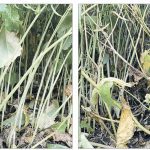
Dual-modal fungicide takes on sclerotinia
Established fungicides combine to boost canola yield, prevent resistance from developing in the oilseed crop
Canola and soybean growers have another option for the control of sclerotinia and white mould with the launch of Viatude for the 2023 growing season. Viatude is a dual-modal product that combines a Group 3 and a Group 11. Kirsten Ratzlaff, portfolio marketing manager for Corteva Agriscience, said Corteva has been testing Viatude for years, […] Read more
Urease inhibitor easy to handle
A Calgary company that produces a line of fertilizer-efficiency additives has a new concentrated urease inhibitor technology that reduces costs of advanced efficiency-fertilizer products. The latest product in Soilgenic Technologies’ lineup is Visio-N Supra, which contains 40 percent N-(n-Butyl)thiophosphoric triamide (NBPT). Jeff Ivan, president and chief executive officer of Soilgenic Technologies, said NBPT has previously […] Read more

Real-time VR decision made in nanoseconds
Flatland variable rate fertilizer application works but likely depends more on current soil moisture than outdated data. If farmers match available soil moisture to the instant of application, then flatland VR works. That’s the opinion of Riceton, Sask., farmer Lee Moats. He said he knows VR nutrient application works on his table-flat farm on the […] Read more

Raining on the VF parade
Flat clay soils on the Regina Plains and the Red River Valley share a common complex problem. Both landscapes are perplexing for agronomists trying to make good nitrogen rate recommendations. Saskatchewan agronomist Lee Moats faces the same challenge as that faced by Manitoba agronomist Brunel Sabourin in his Antara Agronomy CropPro franchise at St. Jean […] Read more
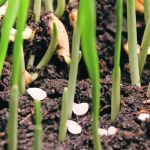
Starter fertilizer 101: especially vital this year
Whether placed beneath, beside or top dressed, fertilizer must be placed with care to avoid burning up yield potential
Strong commodity prices go hand-in-hand with higher input prices and most farmers are concerned about getting the best return on those expensive inputs. A well-managed starter fertilizer plan can help boost that return on investment. Chad Kruse of C & R Supply offered his analysis for introducing starter fertilizer into a no-till farming system in […] Read more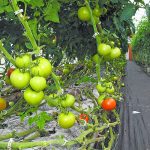
Learning to listen to what our crops are telling us
We’ve looked at crop plants in every conceivable way but have we ever just listened? A research team led by Lilach Hadany at Israel’s Tel Aviv University in Israel has done just that. Plants may be quiet to human ears, but at ultrasonic frequencies, the team found that tomato and tobacco plants in their greenhouse […] Read more
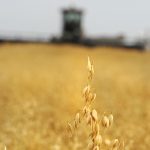
Ingredient company works to honour oat contracts
UPDATED – to include comments from Purely Canada Foods – April 5, 2023 1605 CST – About a month ago, Purely Canada Foods — a food ingredient company — informed about 26 farmers in Saskatchewan that it was voiding their oat contracts. The contracts were for gluten-free oat production in 2022, mostly from farmers in […] Read more
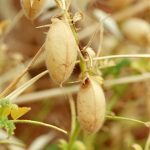
U.S. producers intend to grow fewer chickpeas
The United States is not going to help address what some believe is a looming global kabuli chickpea shortage. U.S. farmers plan to seed 340,500 acres of the crop, a four percent drop from the previous year, according to the U.S. Department of Agriculture’s March Prospective Plantings report. A much bigger increase is needed from […] Read more



 Crop Management
Crop Management


